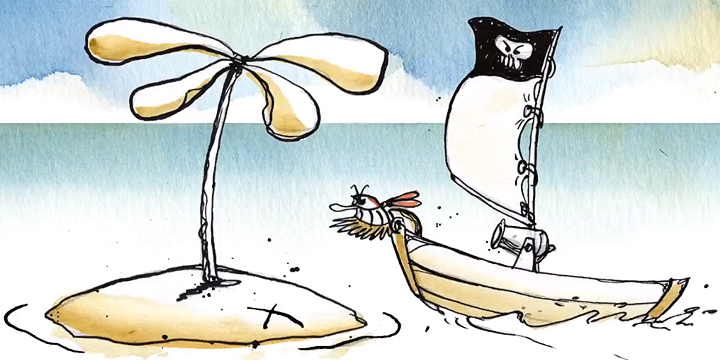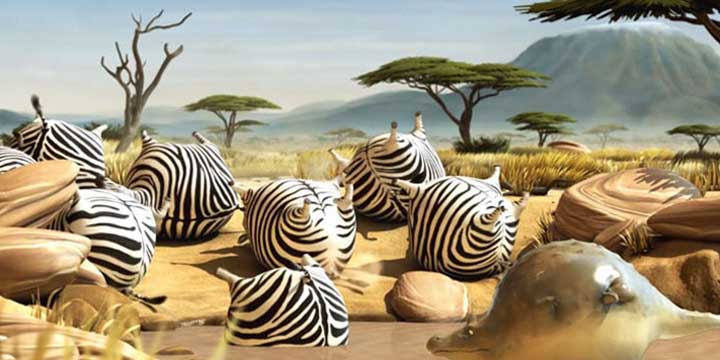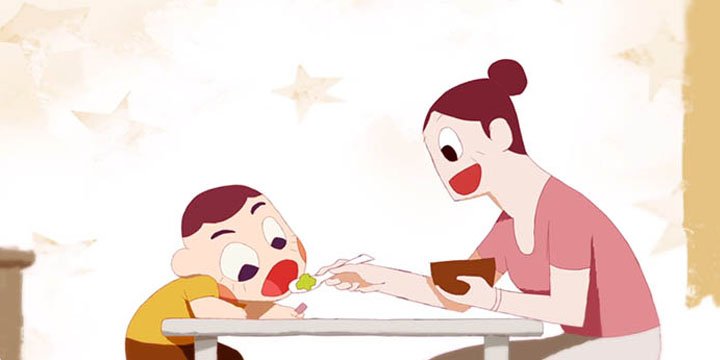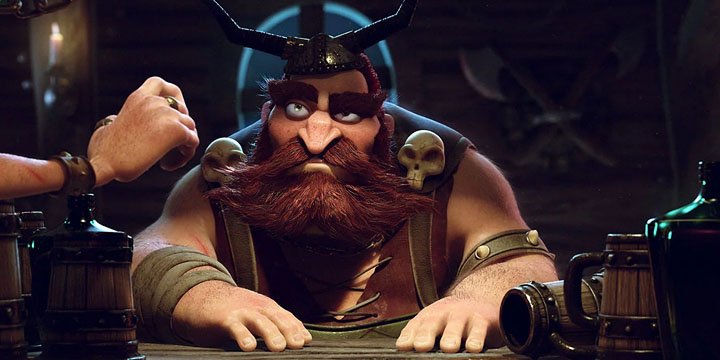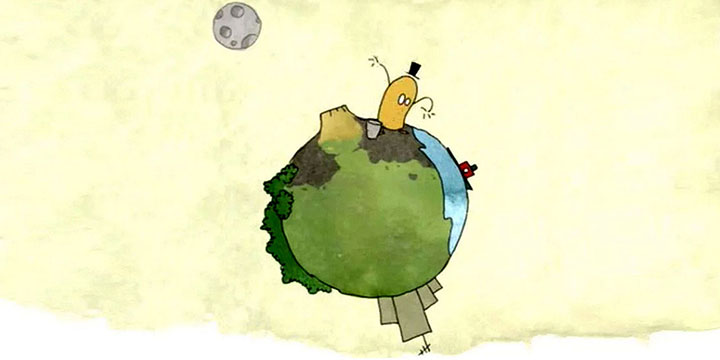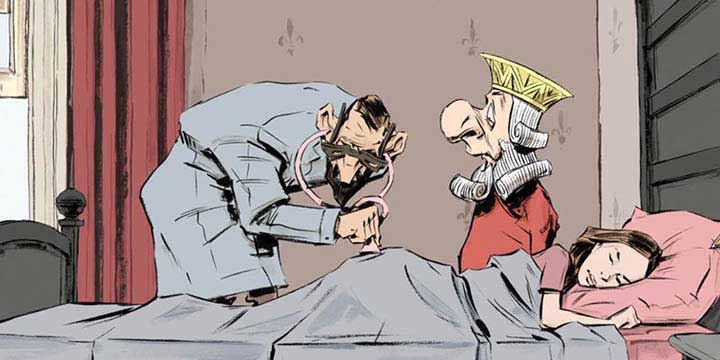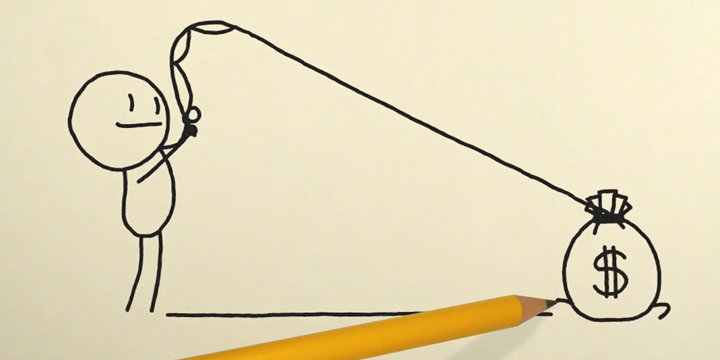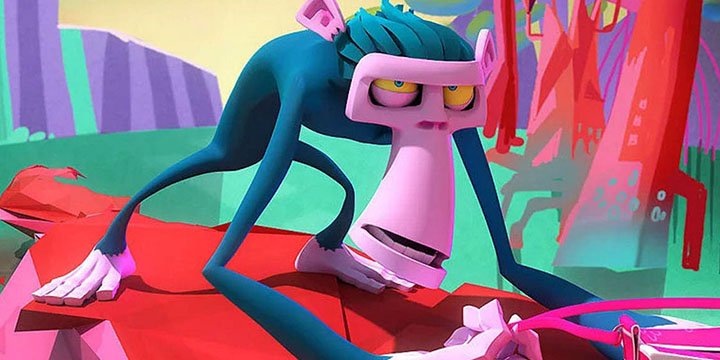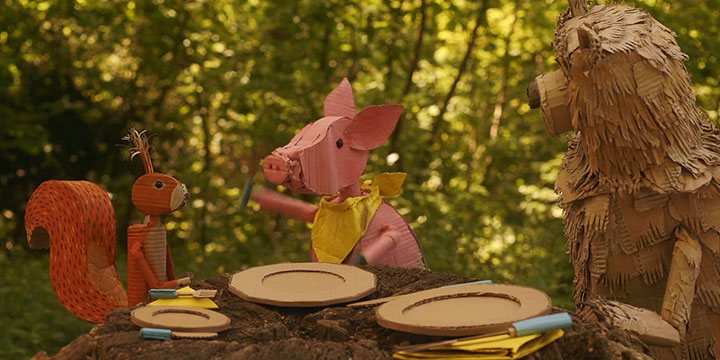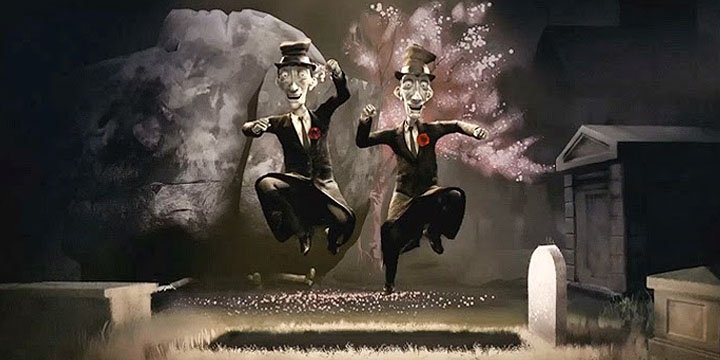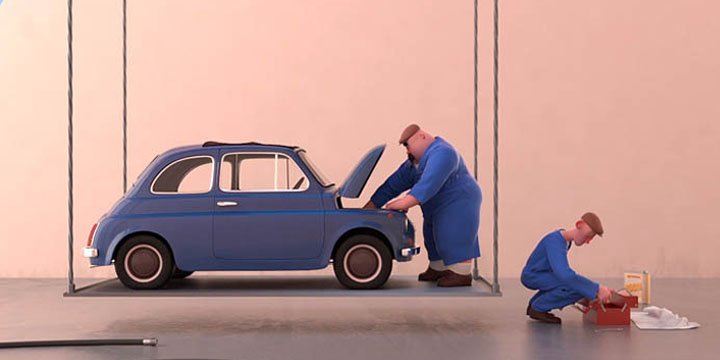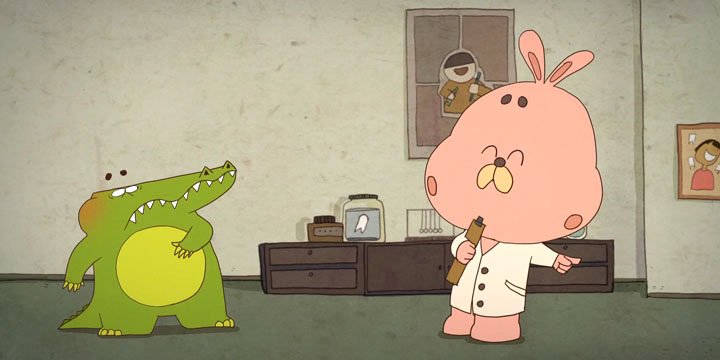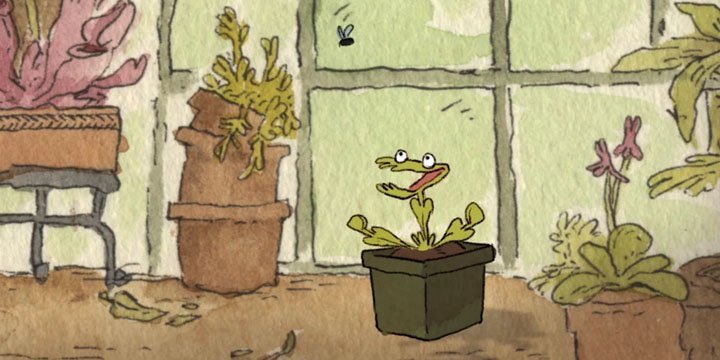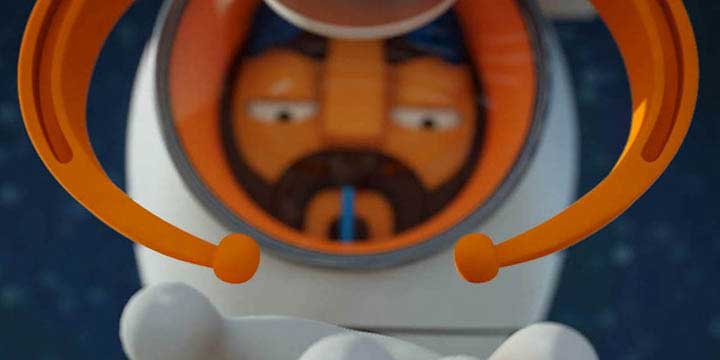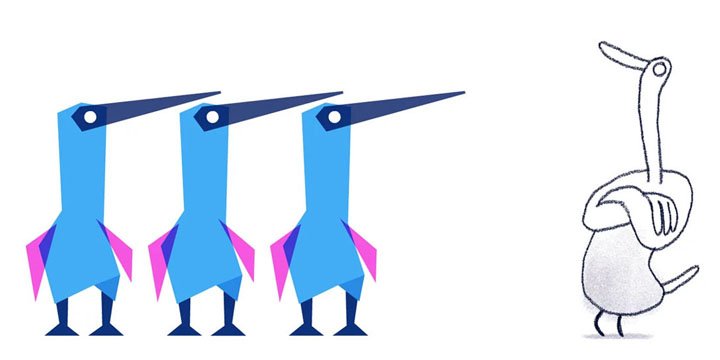Film commentary: Shipwrecked
A zany short film to die for!For children who dream of treasure hunts, deserted islands and piracy.
Follow the adventures of our two clownish heroes. Crazy animation and a very funny ending.
The argument behind Shipwrecked is quite simple: each of the two characters has what the other wants.
The film builds up the situation to the point where it could almost be solved, but, as you would expect, it gets out of hand and a fight ensues that ends with both of them losing. The film thus sets out to describe the situation as the meeting of two individual logics, two exclusive trajectories. First, there is the simplified drawing of the characters and the hysterisation of their behaviours, which become similar to primary impulses ("idiotic", in the first sense, i.e. singular). There is the language, reduced to equally primitive slogans. Finally, there is the simplification created by the island context, where everything becomes a scarce resource, a desirable object that cannot be shared.
It is understandable that, formulated in such a way, the meeting of the two logics obviously cannot find common ground, except in an ironic and forced way, when the two characters share the treasure chest transformed into a frail skiff at the end. Shipwrecked skilfully orchestrates caricature to the point where it almost becomes geometry. He combines humour and logic to make us think about the ever-renewed question of individualism and common interest. The choice of title (a past participle) confirms that, like all fables, it invites us to meditate on the results of our actions.
Discover other films of Frodo Kuipers
Studio MosquitoInterview with the director
Frodo Kuipers answers the blog's questionnaire. Discover a bit of his dreamlike world!Watch other hilarious films by Frodo Kuipers on this site
ShipwreckedStreet
Questioning the film: Shipwrecked
To understand the story, the theme, to express one's sensibility and to exercise one's critical thinking.The film raises an interesting question to raise with the children: the antagonism between individualism and common interest. But it is necessary to spend some time taking the fable apart to show how the problem is schematised.
It should be made clear that the characters are described as being associated with univocal and different logics that will intersect (the castaway needs the pirate's ship to gain his freedom, while the pirate must take possession of the castaway's island to dig up the treasure). The beginning of the film focuses on presenting these logics. The idea of describing them as trajectories is interesting: it compares the movements (or the need to move) of each of the two characters.
In passing, we should emphasise the role of caricature, or how drawing, through simplification, materialises this modelling: the cries of the characters, their "personality" reduced to emotions (envy, fear, rage), their attributes (one has a long view, the other two hooks instead of hands and a boat with a cannon), etc....
We can then study the sequence of events and what it expresses:
- The moment when the two paths cross, when a kind of resolution seems possible (when the castaway has managed to get onto the boat without being seen and the pirate has unearthed the treasure).
- The slippage (when the castaway turns around, attracted by the treasure he had missed on his island).
- The simplification of the struggle (focus on the cannon).
- The irony of the final resolution (the two characters sharing the treasure chest as the only remaining resource).
We can also reflect on the way language functions (fails completely in the case of the film) as a means of bringing the two protagonists together (see the "non-communicative" role of the characters' cries, the episode of the misunderstanding about the message in the bottle). More generally, we can question the success of the characters' actions and the role of chance.
We can put the film back into the context of classical fables, which display their teaching in the form of a final "moral", and show how the film differs from them in form, while sharing the same objectives.
1 What is the goal of each of the characters?How do we understand this?
One wants freedom (to escape from the island where he is a prisoner), the other wants to get rich by finding treasures.They express this directly by shouting it out ("freedom!", "money!").
2 What move does the pirate make?What does this tell us? and the castaway?
He makes a zigzagging path from island to island, exhausting the possibilities in his path, each time coming up empty-handed, but continuing onwards.The castaway does not move, but keeps his eyes open for any direction, all of which could lead him away from the island.
3 Do the two characters have anything in common?
Their determination to pursue their goal at all costs.They each have a 'fixed idea'.
4 How dotheir plans work out once they have joined up?
They fight over the resources they covet: the gold and the boat.
5 Do they share anything at the end of the film?
The (useless) remains of what they might have shared: the treasure chest.
6 Dothe characters try to communicate?Does it work?
The castaway tries to get the attention of rescuers, but it doesn't work.The message in the bottle is misunderstood by the pirate.Then they don't communicate: they fight.
7 Do the actions of the characters in this film lead to the result they expect?
Not at all.By pursuing their personal goals without paying attention to their surroundings, they only succeed in making their situation worse.
8 In what ways is this film similar to a fable by La Fontaine?How is it different?
We can reflect on the situation and learn from it.But unlike a fable by La Fontaine, this lesson is not formulated in the film.
9 Isthe drawing and animation "realistic"?How does this help to understand the film?
They are very simplified, they are caricatures.This is a way of bringing out the ideas of the film better.


